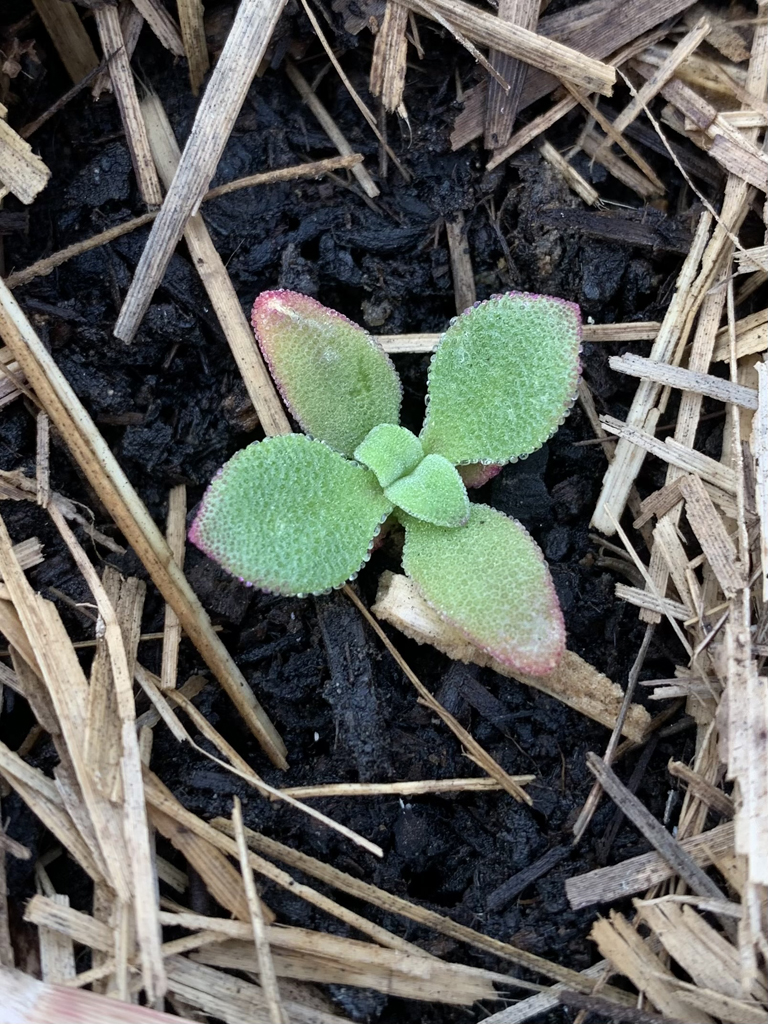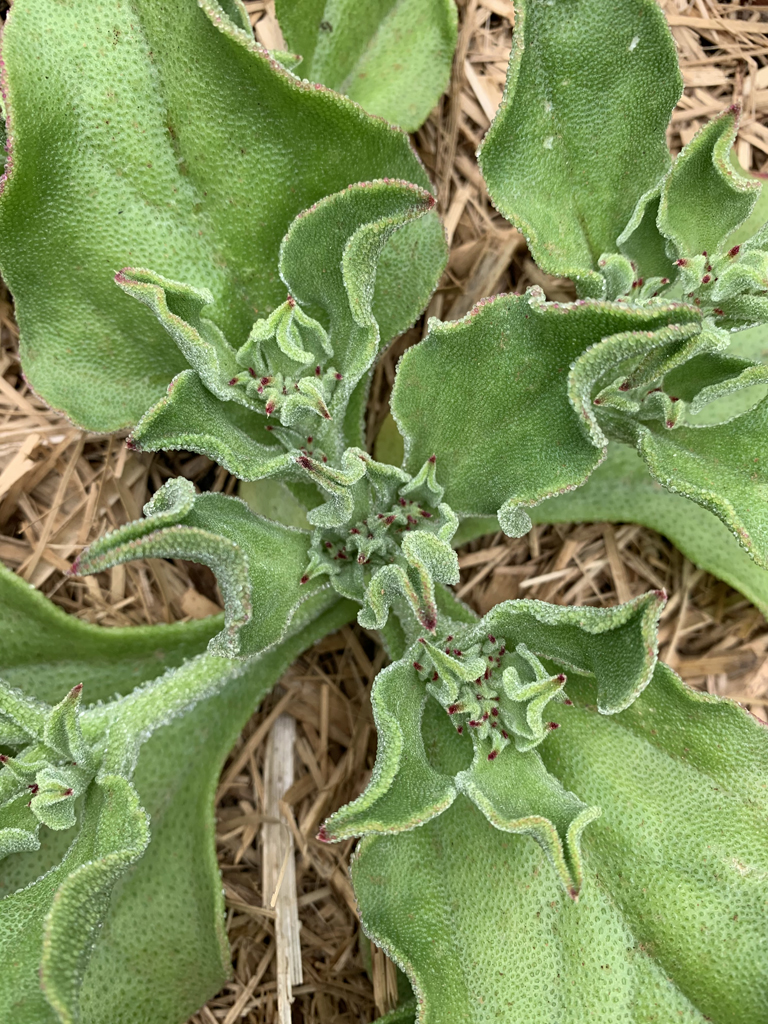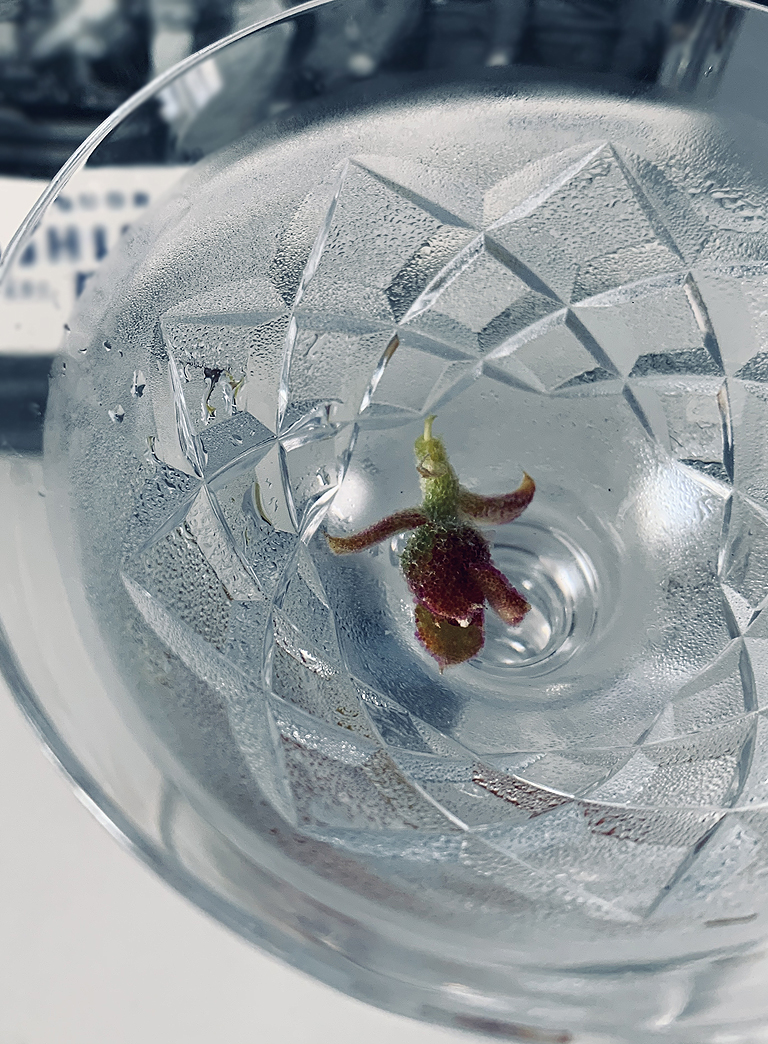There are very few plants in my garden that I call my pride and joy, the Ice Plant is one of them. Here are my tips on how to grow the ice plant successfully from seed.

Ice Plant – Photo © The Gourmantic Garden
Ice Plant
The Ice Plant (Mesembryanthemum crystallinum) is a regular feature and a favourite in my edible garden. The salty succulent is native to Africa and southern Europe and has been naturalised in Australia. The perennial plant derives its name from its stems and foliage which have tiny speckled bumps, or bladder cells that store salt which give it an icy and crystal-like appearance. The leaves are edible and when crushed, they can be used as a soap substitute.
It grows in a prostrate manner, spreading its stems 60cm across. It can be grown in sandy oil and can tolerate nutrient poor soils but it will die in light frost. The plant flowers from spring to early summer, producing attractive white flowers that open during the daylight hours and closes at night.
While it is considered perennial, I have yet to keep one alive past mid-summer in my coastal Sydney climate.
Ice Plant Growth Cycle
Before I share my tips on how to grow the ice plant successfully, let’s take a look at the various phases of growth as it has a fascinating life cycle.

Seedling – Photo © The Gourmantic Garden
The seedling starts as tiny leaves with a crystallised appearance.

Fleshy Leaves – Photo © The Gourmantic Garden
As it grows, it develops large, fleshy green leaves that are soft and delicate to the touch. Care should be taken as they bruise easily.

Early Bud Formation – Photo © The Gourmantic Garden
As the plant grows and spreads laterally, you’ll see an early formation of buds and flowers.

Icy Appearance- Photo © The Gourmantic Garden
The leaves begin to shrivel and the stems develop a marked icy appearance.

Ice Plant Flowers – Photo © The Gourmantic Garden
The buds turn into white flowers which open in the morning and close at night.

Ice Plant – Photo © The Gourmantic Garden
The flowers start to shrivel ahead of seed formation. It is at this stage that my ice plants signal the beginning of the end.
I have always grown them in wide pots, however, this season I have transplanted a mature plant into my Australian native raised garden bed. I will update this post if the plants live up to their perennial status.
GROW IT
When it comes to growing mesembryanthemum crystallinum from seed, the process is a little fiddly to start. The seeds are the size of grain of sand and coupled with a low germination rate and delicate leaves, it can be a challenge. In my experience, it took several attempts for germination followed by stunted growth then watching some seedlings wither and die. After a few trials, here’s what has finally worked for me.
Tips for Growing Ice Plant
- The ice plant has the tiniest seed which makes it difficult to handle. My tip is to mix the seeds with clean sand prior to sowing.
- Sow the seed in spring in a small container filled with moist, nutrient rich and well draining soil lightly covered with seed raising mix and vermiculite.
- Keep the surface moist with a gentle spray of water but not too wet.
- Wait until the plant has at least six true leaves before transplanting. It makes handling the delicate seedling much easier.
- If you’re growing it in a container, make sure it has enough space to spread in order to accommodate its growth in a prostrate manner.
- When transplanting, be very gentle as the leaves bruise easily and don’t recover.
- If you’re transplanting into a larger pot, make sure it has good drainage as the plant doesn’t like being too wet.
- Don’t overwater the plant or it could lead to root rot. Otherwise it is relatively pest free.
- Mesembryanthemum crystallinum likes full sun. Give it 6 to 8 hours a day and it will thrive.
- To harvest the seeds, collect the shrivelled flowers and air dry them in a cool location.
EAT IT
Culinary Uses of the Ice Plant
The ice plant is edible. It tastes salty with a hint of acidity and can be used in cooking and cocktails. The edible plant can be used to garnish dishes, adding salinity and texture. It pairs well with fish, omelettes and seafood dishes as well as salads.
DRINK IT
Ice Plant in Cocktails

Ice Plant Martini – Photo © The Gourmantic Garden
The ice plant makes an attractive cocktail garnish and can be incorporated in the drink. In one example, I’ve used it in a dry Martini, using navy strength gin with botanicals that include saltbush, desert lime, macadamia, finger lime and macrobiotic salt.
You may also like… How to Grow Samphire

